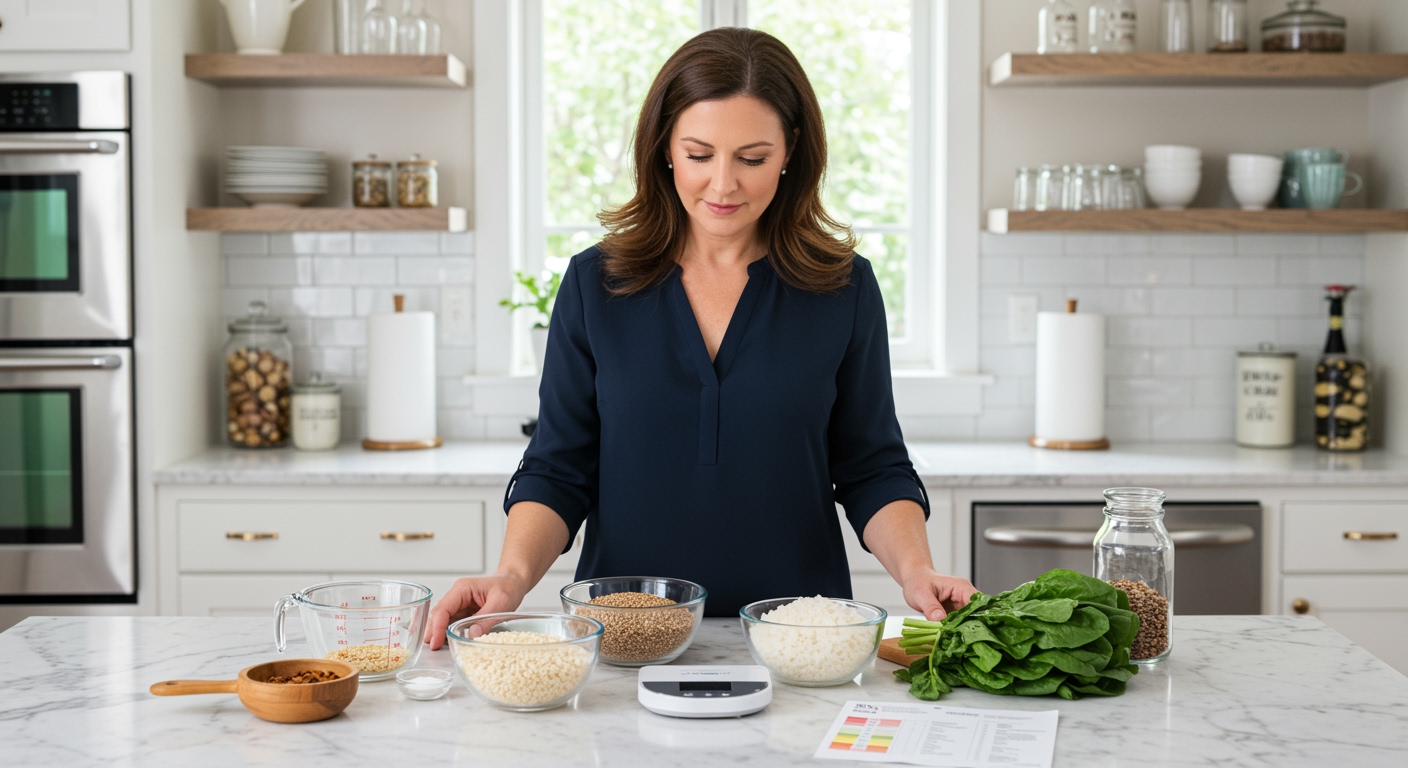✪ Key Takeaway: Quinoa offers better protein, fiber, and blood sugar control than rice, making it superior for PCOS women.
Introduction
You walk down the grocery aisle staring at bags of quinoa and rice, wondering which one will actually help your PCOS symptoms.
Many women with PCOS struggle with this choice because they want to make the right decision for their hormone balance, weight management, and insulin resistance.
Hi, I’m Abdur, your nutrition coach, and today I’m going to explain exactly why quinoa beats rice for PCOS women and how this simple swap can transform your symptoms.
What Makes Quinoa Different From Rice?
Quinoa is technically a seed, not a grain, which gives it a completely different nutritional profile than rice.
One cup of cooked quinoa contains 8 grams of protein compared to only 4 grams in white rice and 5 grams in brown rice.
This protein difference matters tremendously for PCOS women because protein helps stabilize blood sugar levels and reduces insulin spikes.
Quinoa also provides all nine essential amino acids, making it a complete protein that supports muscle maintenance and hormone production.
Rice lacks several essential amino acids, particularly lysine, which means your body cannot use its protein as effectively.
The fiber content in quinoa reaches 5 grams per cup, while white rice contains less than 1 gram and brown rice provides about 4 grams.
✪ Fact: Quinoa contains twice as much iron and magnesium as brown rice, nutrients crucial for PCOS management.
How Does Each Grain Affect Blood Sugar?
The glycemic index reveals the most important difference between these two options for PCOS women.
Quinoa has a glycemic index of 53, which falls in the low category, while white rice scores 73 and brown rice reaches 68.
Lower glycemic index foods cause slower, more gradual increases in blood sugar, which helps prevent insulin resistance from worsening.
When you eat quinoa, your pancreas releases insulin more slowly and steadily compared to the rapid spike that occurs with rice.
This steady insulin response helps reduce the conversion of excess glucose into fat, particularly around your midsection where PCOS women typically store weight.
The high fiber and protein in quinoa also slow down digestion, keeping you satisfied longer and preventing the energy crashes that trigger sugar cravings.
✪ Pro Tip: Rinse quinoa thoroughly before cooking to remove the natural coating that can taste bitter.
Which One Supports Weight Management Better?
Weight management becomes significantly easier when you choose quinoa over rice because of its superior satiety factor.
The combination of protein and fiber in quinoa triggers the release of hormones like GLP-1 and CCK that signal fullness to your brain.
Studies show that people who eat quinoa consume fewer calories throughout the day compared to those who eat rice-based meals.
Rice, especially white rice, gets digested quickly and leaves you feeling hungry again within 2-3 hours, leading to overeating.
The protein in quinoa also has a higher thermic effect, meaning your body burns more calories just digesting it compared to rice.
For PCOS women who struggle with slow metabolism, this extra calorie burn can make a meaningful difference over time.
✪ Note: Quinoa contains about 220 calories per cup compared to 205 in brown rice, but the extra protein makes it worth it.
What About Nutrient Density For Hormone Health?
Quinoa delivers significantly more micronutrients that directly support hormone production and PCOS symptom management.
It contains high levels of magnesium, which helps improve insulin sensitivity and reduces inflammation throughout your body.
The zinc content in quinoa supports healthy testosterone levels and can help reduce excess hair growth and acne in PCOS women.
Quinoa also provides folate, which is essential for proper cell division and can help regulate menstrual cycles.
Rice, particularly white rice, has been stripped of most vitamins and minerals during processing, leaving mainly empty carbohydrates.
Even brown rice cannot match quinoa’s nutrient density because it lacks the complete amino acid profile and higher mineral content.
The antioxidants in quinoa, including quercetin and kaempferol, help reduce the chronic inflammation that worsens PCOS symptoms.
✪ Fact: Quinoa contains more potassium than a banana, helping to balance sodium intake and reduce bloating.
Are There Any Downsides To Consider?
The main drawback of quinoa is its higher cost compared to rice, which can strain grocery budgets.
Some people experience digestive discomfort when first introducing quinoa because of its high fiber content.
You should start with smaller portions and gradually increase the amount to allow your digestive system to adapt.
Quinoa also contains natural compounds called saponins that can cause stomach upset if not properly rinsed before cooking.
The cooking time for quinoa is slightly longer than white rice, though similar to brown rice at about 15-20 minutes.
However, these minor inconveniences pale in comparison to the significant benefits quinoa provides for PCOS management.
✪ Pro Tip: Buy quinoa in bulk from warehouse stores to reduce the per-serving cost significantly.
The Bottom Line
Quinoa clearly wins over rice for PCOS women because of its superior protein content, lower glycemic impact, and higher nutrient density.
Small changes in your grain choices can create big improvements in your hormone health and symptom management over time.
I would love to hear about your experience with quinoa or any questions you have about making this dietary switch in the comments below.
References
At NutritionCrown, we use quality and credible sources to ensure our content is accurate and trustworthy. Below are the sources referenced in creating this article:
- PMC: Nutritional and therapeutic potential of quinoa
- CCRM IVF: Food and PCOS
- PCOS Nutrition: Quinoa for PCOS
- Casa de Sante: Can I eat quinoa with PCOS





